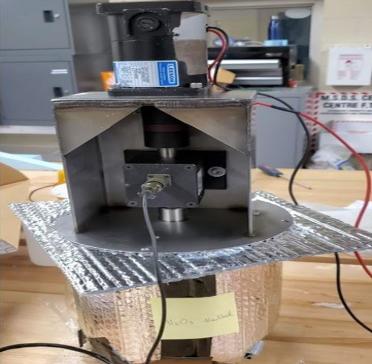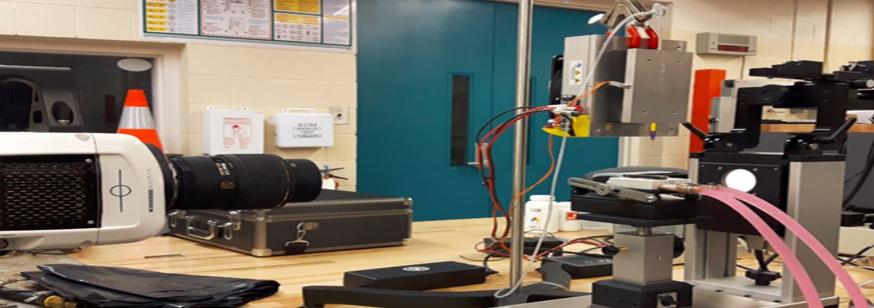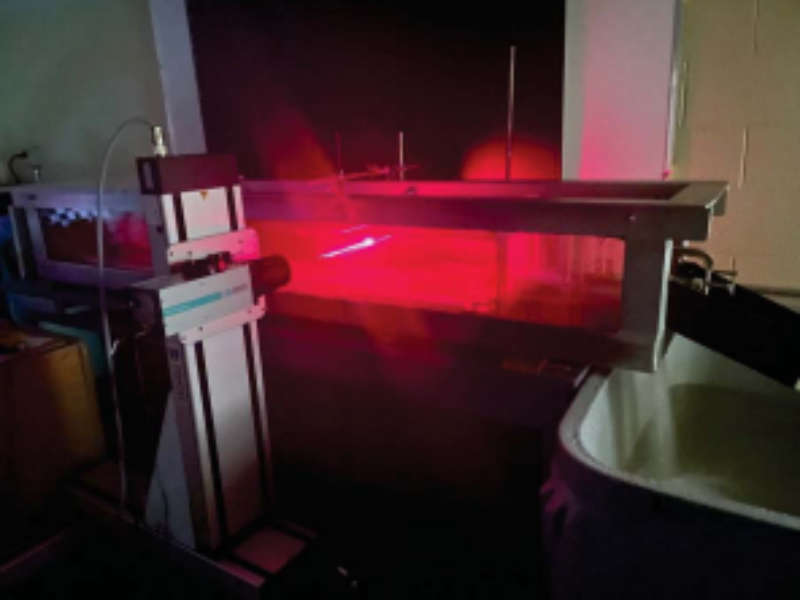Thermal Fluids and Energy Research Laboratory
About | People | Equipment | Location
About
The Thermal, Fluids and Energy Research Lab is dedicated to advancing sustainability through 21st century fundamental and applied research. The facility, accompanying equipment and talented personnel position the lab to conduct cutting-edge research on a variety of important physical processes. The research is critical to improving the performance and viability of sustainable energy systems, as well as for training of highly qualified personnel to contribute to a sustainable and clean future. Currently, the primary focus of the lab is on clean hydrogen production, smart functional surfaces, microelectronic cooling, freezing and melting, wind turbine/tidal conversion systems, multiphase flow (including nanofluids), and thermal hydraulic dynamics at the solid-liquid interface. Applications include energy production and energy storage, drag reduction, electronics cooling, microfluidics, robust thermal design, thermal management, flow assurance, asset integrity, and safety management among others.
The research activities in the lab include:
- Hydrogen production
- Reaction kinetics for thermodynamic hydrogen production
- Chemically reactive multiphase flows for thermochemical hydrogen production
- Microfluidics and multiphase flow
- Microfluidics
- Multiphase Flow
- Ocean energy conversion systems
- Hydrodynamics of tidal turbines
- Performance analysis of floating wind turbines
- Functional surfaces
- Developing functional surfaces and coatings with special properties (e.g., superhydrophobic) for thermal fluids and energy applications including drag reduction, anti-icing, and energy storage.
- Wind energy
- Predicting, detecting and preventing ice on wind turbine blades
- Wind turbine aerodynamics
- Wind powered thermal energy system
People
- Dr. Baafour Nyantekyi-Kwakye
- Turbulent structures in separated and reattached flows
- Atomization in gas turbines
- River ice processes
- Ice jam and border ice stability
- Dr. Maha Bhouri
- Heat transfer
- Solid hydrogen storage systems
- Thermochemical heat storage systems
- Latent heat thermal energy storage systems
- Renewable and non-renewable energy storage and conversion processes
- Dr. Xili Duan
- Heat transfer
- Phase change
- Energy storage
- Fluid mechanics
- Multiphase flow
- Thermal management
- Dr. Yuri Muzychka
- Heat transfer
- Fluid dynamics
- Multiphase flow
- Thermal systems
- Thermal management in micro-electronic packaging
- Dr. Greg Naterer
- Energy systems
- Heat transfer
- Multiphase flows
- Second law of thermodynamics
- Dr. Kevin Pope
- Chemically reactive multiphase flows
- Energy systems
- Energy storage
- Second Law applications to thermal / fluids
- Energy efficiency
- Process integration
Equipment
 The Contact Angle Measurement System is used to characterize surface wettability. It measures static and dynamic contact angles of liquids on various surfaces. It can also measure surface and interfacial tension/energy.
The Contact Angle Measurement System is used to characterize surface wettability. It measures static and dynamic contact angles of liquids on various surfaces. It can also measure surface and interfacial tension/energy.
 This unit is to study wind-powered heat generation and storage. It allows the testing of kinetic energy conversion to thermal energy through fluid agitation. It uses an electric motor to simulate the kinetic energy input from a wind turbine. Temperature rise in the fluids is measured along with rotational speed and torque through a data acquisition system.
This unit is to study wind-powered heat generation and storage. It allows the testing of kinetic energy conversion to thermal energy through fluid agitation. It uses an electric motor to simulate the kinetic energy input from a wind turbine. Temperature rise in the fluids is measured along with rotational speed and torque through a data acquisition system.
 The flow loop is used for pipeline flow drag reduction and oil-water separation research, with flow diagnostic equipment including Laser Doppler Velocimetry (LDV), Particle Imaging Velocimetry (PIV), and high-speed infrared thermometry. With the oil and water tanks and separate flow lines, the setup allows single or two-phase flow experiments. A special diaphragm pump is used to inject concentrated drag reduction polymers or surfactants into the main pipeline. Pressure drop is measured in a 2-m test section by a high-precision differential pressure sensor. The measured pressure drop will be used to calculate flow drag reduction.
The flow loop is used for pipeline flow drag reduction and oil-water separation research, with flow diagnostic equipment including Laser Doppler Velocimetry (LDV), Particle Imaging Velocimetry (PIV), and high-speed infrared thermometry. With the oil and water tanks and separate flow lines, the setup allows single or two-phase flow experiments. A special diaphragm pump is used to inject concentrated drag reduction polymers or surfactants into the main pipeline. Pressure drop is measured in a 2-m test section by a high-precision differential pressure sensor. The measured pressure drop will be used to calculate flow drag reduction.
 This setup generates small water droplets with controlled temperature. The drops then impact on metal surfaces with variable wettability and controlled surface temperatures to study their impact dynamics, heat transfer and icing behaviours.
This setup generates small water droplets with controlled temperature. The drops then impact on metal surfaces with variable wettability and controlled surface temperatures to study their impact dynamics, heat transfer and icing behaviours.
 The high-speed camera is used to capture fluid flow or droplet dynamic images at a high frame rate (up to 10k fps). This enables fluid dynamics analysis at very high temporal and spatial resolutions.
The high-speed camera is used to capture fluid flow or droplet dynamic images at a high frame rate (up to 10k fps). This enables fluid dynamics analysis at very high temporal and spatial resolutions.
 The environment chamber provides a controlled temperature environment for the characterization of materials (such as measuring thermal properties of phase change materials at specified temperatures). The thermal baths provide desired boundary conditions for various heat transfer experiments.
The environment chamber provides a controlled temperature environment for the characterization of materials (such as measuring thermal properties of phase change materials at specified temperatures). The thermal baths provide desired boundary conditions for various heat transfer experiments.
Location
EN-1034
Faculty of Engineering and Applied Science
Memorial University of Newfoundland
St. John's. NL
